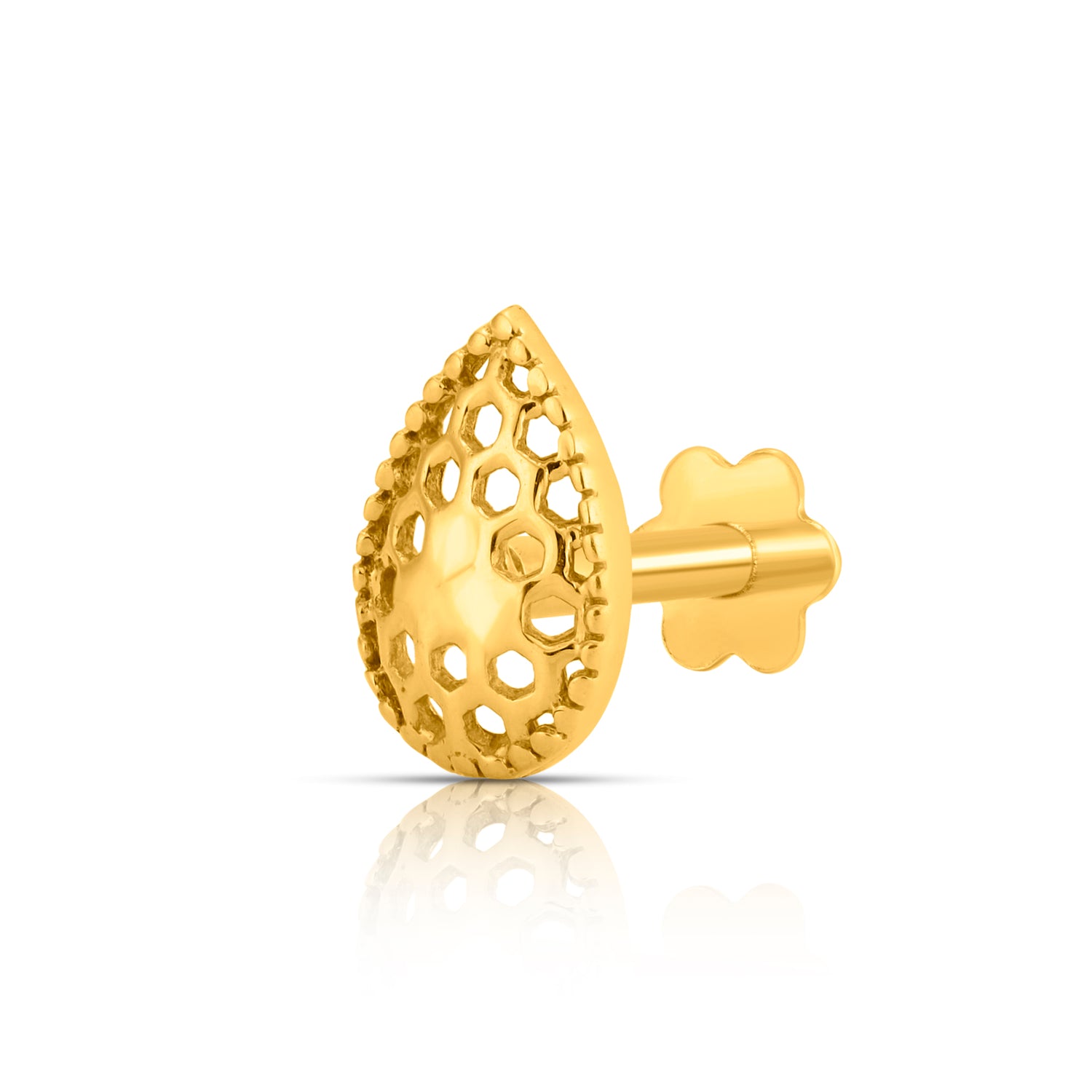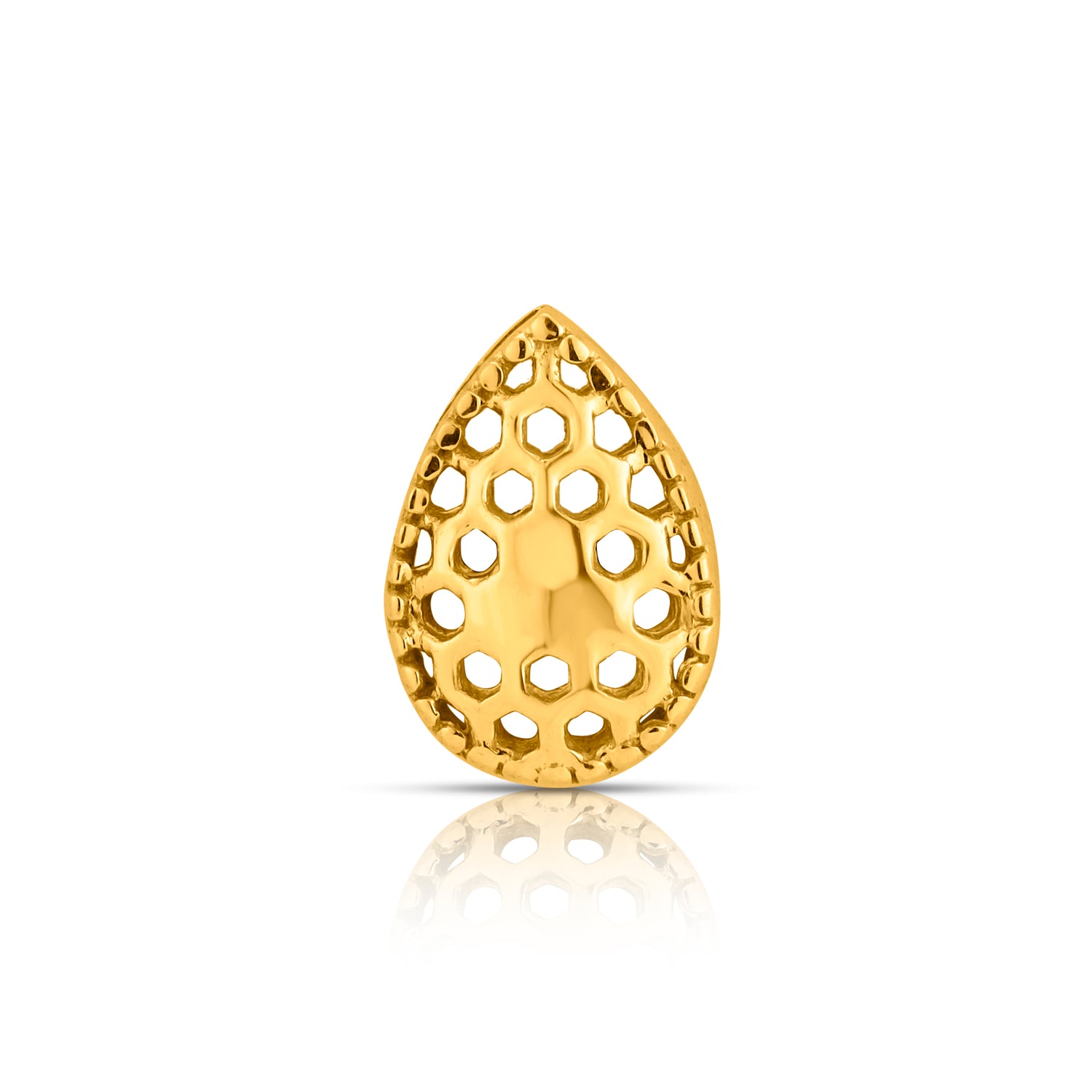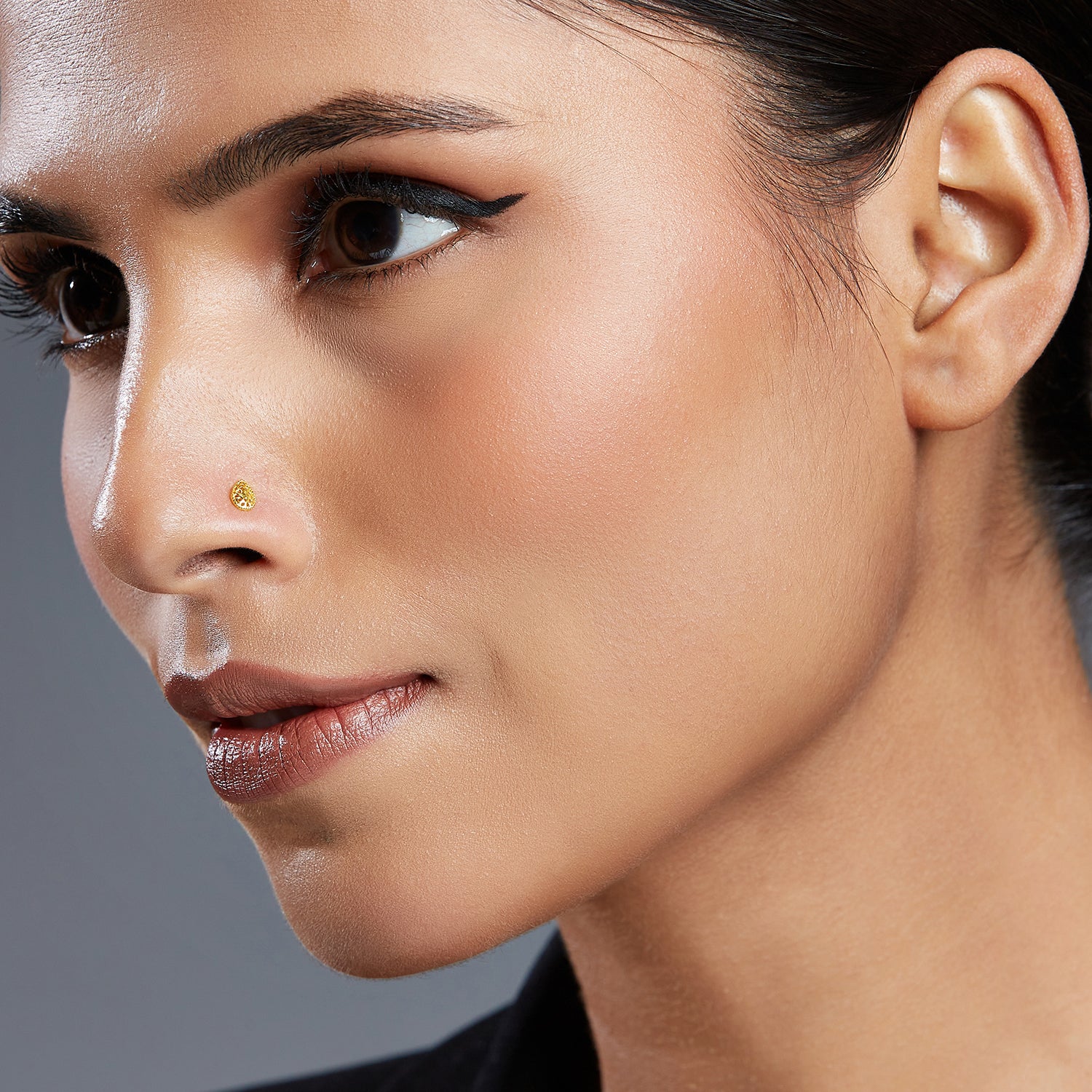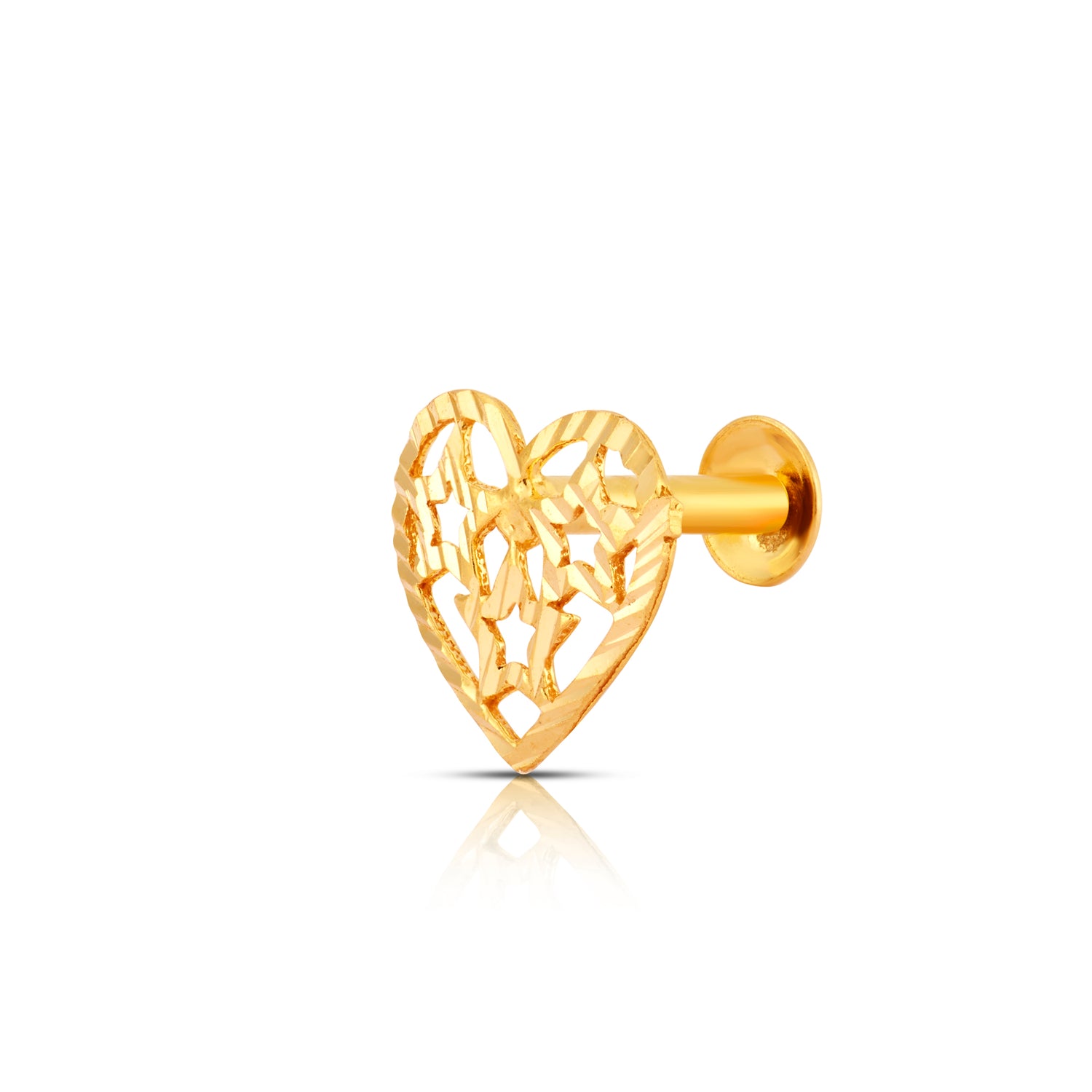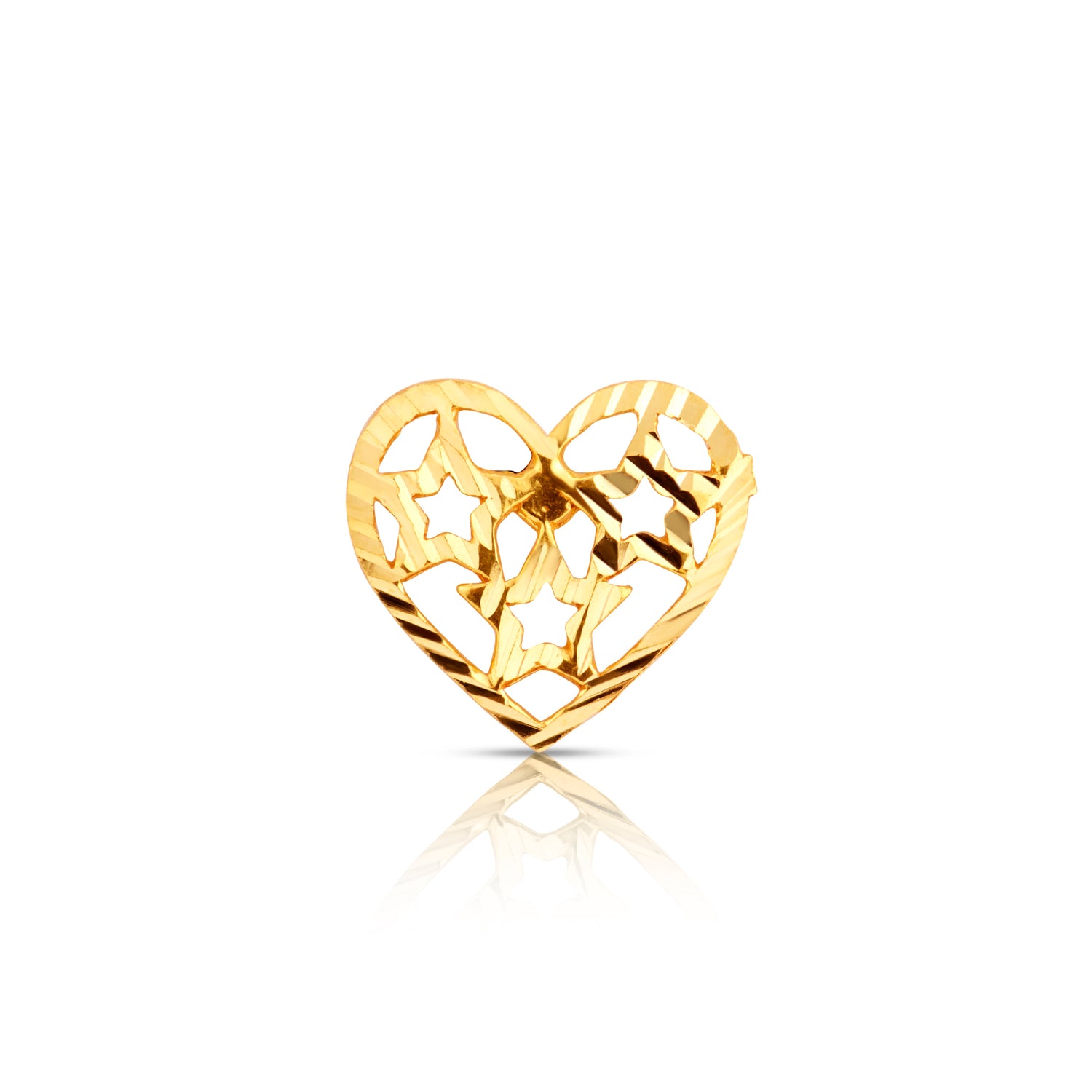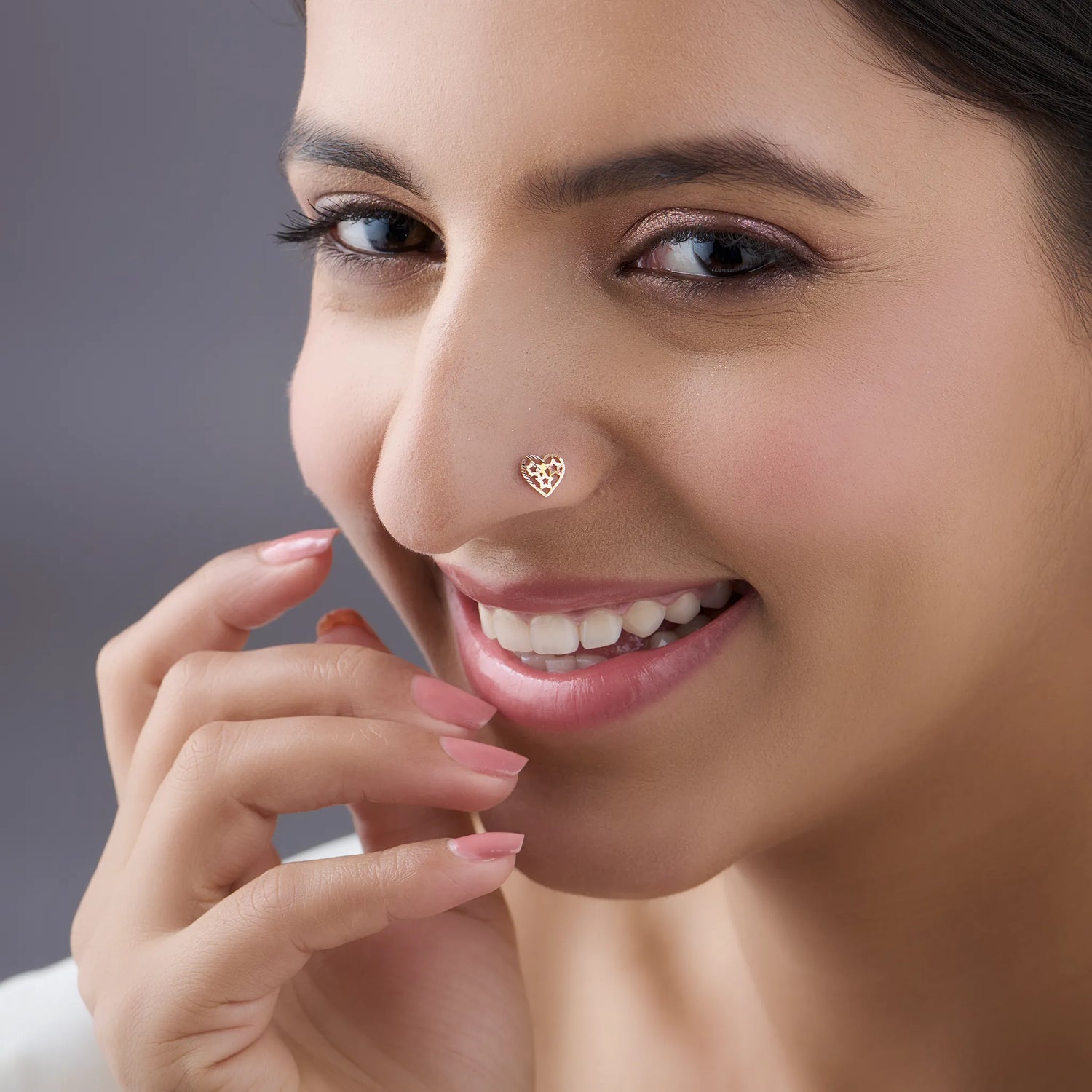
The Timeless Story of Nose Pins: From Ancient Traditions to Modern Style
Let me ask you something—have you ever watched someone in your family, maybe your grandmother or an older aunty, gently twist her nose ring with a kind of quiet pride right before a big family gathering? I can still picture our grandmothers in the mirror, a soft sigh as she adjusted her thin, nose pin gold ring, a ritual as familiar as her evening chai.
There’s something almost magical about those moments. And then, years later, we find ourselves standing before our own reflection, fingers trembling just a bit, heart thrumming with anticipation (and, if I’m honest, a pinch of nerves) as I slid in my very first nose pin. Funny how the smallest things can feel like rites of passage.
That’s the thing about nose pins. They’re not just pretty ornaments, no, not by a long shot. They’re tiny portals to memory and meaning. A sparkly thread running through generations, a tiny but mighty badge of identity, and sometimes, when you least expect it, a quiet reminder that you belong right here, among your people, your stories.
Let’s wander together down this twisty path of history, culture, and a splash of personal flair, and see just why these little nose pins mean so much to so many. And, if you’ll trust me, maybe you’ll find your own reason to love that glint on the side of your nose.
Explore the Evolution of Nose Pins

A Journey That Spans Millennia
Picture this: a mother in ancient Australia, all those thousands and thousands of years ago, gently piercing her child’s septum with a shell found on the shore. More than an ornament—this was a marker, a family’s way of saying, “You are part of us.” Fast forward to the bustling courts of Egypt: gilded nose jewels shimmering in the sunlight, status and beauty twirl like the threads on an old loom.
And then there’s India—our own family’s home. Try to imagine a young bride in a swirl of silk lehenga, her chin lifted even as nervous laughter escapes, her nose delicately pierced in a ritual passed down from countless mothers before her. Each glimmer of her Nath tells a story—of dreams, blessings, and hopes stitched into the very fabric of womanhood. It’s almost dizzying, how much history a simple pin can hold.

Read More: How to Style Your Nose Pin with Ethnic & Western Outfits
Never Just a Piece of Metal: The Stories We Wear
Close your eyes for a second. Imagine those very first nose pins: rough bone or wood, perhaps a little heavier than today’s nose pin designs, but worn with no less pride. I love thinking of the hands that made them—how they’d know just the right shape for comfort, the right size to stand out, maybe even a little flourish of color added with local dyes. These weren’t just “accessories”—they were shields, signatures, and vessels for memories.
Fast forward to the Mughal era, when nose rings stopped just being for show. A Mughal queen’s nose ring wasn’t merely a vanity project—it was woven with aspirations for joy, prosperity, and children. There’s a whisper of that hope every time I clip in a gold stud or choose a petite diamond.
Even now, when you buy a BIS-hallmarked pin or a lab-grown gem online, you’re choosing a piece of a centuries-old story. Sometimes I think every nose pin has absorbed the love and laughter of those who wore it before—it’s hard not to get sentimental about that.
If your nose pin is a gift, an heirloom, or a rebel’s treat to yourself after a hard day—it doesn’t matter. The feeling is the same. It’s like holding hands across time.
Old Remedies and New Rituals: Nose Pins for Wellness
Maybe you’ve heard a grandmother say it’s good for you—piercing the left nostril, I mean. Ayurveda, our ancient science of life, always seems to have an answer. It teaches that a pin on the left can ease a woman’s burdens: her cycles, her childbirth, her daily ebb and flow. There’s science tucked away in tradition, but honestly? Sometimes I think the real magic is the moment a mother or aunt sits you down, strokes your hair, and tells you that this is so you’ll always stay strong.
I never really gave it much thought when I was younger, but the more I’ve come to rely on simple rituals—a nose pin, some oil in my hair, that special herbal tea after a long day—the more I see the wisdom behind these gentle practices. Sometimes, the smallest pinch of nose pin gold is a talisman, a prayer, or a subtle nod to the generations of women who walked before us.
Learn More: Nose Pin Superstitions & Beliefs in India
A Riot of Styles: The Indian Patchwork
If you wander through old family albums in my house, you’ll spot it—every woman with her own twist (sometimes literally) on the nose pin. A massive Maharashtrian nath here, curling proudly across the cheek, or a tiny mookuthi winking from a young Tamil girl’s face at her first big festival. It’s like every region in India wrote its own chapter: elaborate gold hoops, delicate chains, shining stones, all arranged differently and worn with fierce pride.
Sometimes, when I’m traveling—on an early morning train in Kolkata or a bustling handicraft market in Jaipur—I’ll catch another woman’s eye and we’ll both know: our nose pins are a kind of shorthand. Family, community, celebration—or maybe even a story of heartbreak and new beginnings. Placement matters too: left, right, septum—each a little secret, a tale told in silver and gold.
Breaking the Mold: When Nose Pins Mean More
Here’s something I’ve been thinking about lately. For such a small thing, the nose pin shatters expectations. It started, maybe, for brides and girls at puberty, but look closer: Rajasthani men flaunted their own grand designs. Fierce Berber warriors carried stories in nose rings. And today? Nose pins are for anyone and everyone who wants them.
There’s something quietly radical about wearing your truth on your nose—whether it’s your heritage, your gender, or just your wild love for all things shiny. I have a friend, a dancer, who wears a nose pin in rehearsals and on stage, twirling with the joy of self-expression. There’s real power in claiming your place, in whatever form feels true.
Check this one also: How to Pick Your First Gold Nose Pin - Full Buyer's Guide
A Global Chorus—Nose Pins Without Borders
There’s a photograph I love: an Aboriginal teenager, barely old enough for her first ring, grinning for the camera. Or a North African bride, her pin a testament to her family’s love and her own worth. Across the world—from Mayan temples to Middle Eastern markets—nose pins aren’t just decoration; they’re declarations. Markers of who we are, where we’re from, and sometimes, of what we hope to become.
I suppose it’s easy to forget all that when we buy a piece of jewelry online or pick one out at the market. Still, every time I glance at my reflection and see that tiny sparkle, I remember—there’s a thousand stories inside even the simplest nose pin.
Old Artisans, New Stories—The Tradition Continues
Maybe your nose pin was tucked away by your grandmother, bundled with wedding saris and the family passport. Or maybe you clicked “Buy Now” on a brand’s page—Yuvora, say—and it arrived, gleaming, ready to be “yours.” Today’s artisans blend old wisdom with a touch of modern elegance.
I’ve seen master karigars lost in thought over a single piece for days; that careful art is alive and well, now shared across continents at the tap of a screen.
I like to think we’re all part of that chain. Every shiny new purchase, every bold style choice, every tearful handing over of an heirloom—it’s all ceremony. It’s all connected.
A Sparkle, A Story
So here’s my invitation: next time you slip in that nose pin, pause for a breath. Remember those who wore theirs before you. Imagine who might wear it someday after you’re gone. And smile a little, knowing that every sparkle is a fragment of your joy and your journey, out there for the world to see.
In a world so ready to forget the small things, it’s these tender rituals, the twisting of a pin, the hush before a mirror, the wisdom passed from hand to hand—that keep us whole. So whether yours is gold, diamond, or humble silver, it’s a beacon: of memory, of celebration, of home.
And that, I think, is something to hold close.
FAQs on The Timeless Story of Nose Pins
-
Where did the tradition of wearing nose pins originate?
Nose pins have origins in ancient cultures such as South Asia, the Middle East, Africa, and Indigenous communities in Australia. -
Why are nose pins considered culturally significant?
They symbolize identity, womanhood, family heritage, marital status, and sometimes protection and prosperity. -
Are nose pins still popular in modern fashion?
Absolutely today they blend tradition with contemporary style, making them a popular accessory across all ages and genders. -
What materials were used in ancient nose pins?
Early nose pins were crafted from bone, wood, shells, and simple metals before evolving into gold, silver, and gemstones. -
Do different regions in India wear nose pins differently?
Yes. From the Maharashtrian nath to the Tamil mookuthi to Rajasthani hoops, each region has its own distinct style. -
Is there any connection between nose pins and Ayurveda?
Yes Ayurveda suggests that piercing the left nostril can support reproductive health and ease menstrual discomfort. -
Why do some people wear nose pins on the right, left, or septum?
Placement varies by tradition, regional custom, and personal preference. -
Do men also wear nose pins in history and today?
Yes. Many tribes and cultures, such as Rajasthani men and North African communities, have a long tradition of men wearing nose pins. -
Are nose pins connected to rituals or special occasions?
Yes they are central to rites of passage, weddings, puberty rituals, and cultural celebrations. -
What makes modern nose pins different from traditional ones?
Modern designs blend lightweight comfort with minimalism, diamonds, crafted details, and hallmarked purity while still holding cultural meaning.








